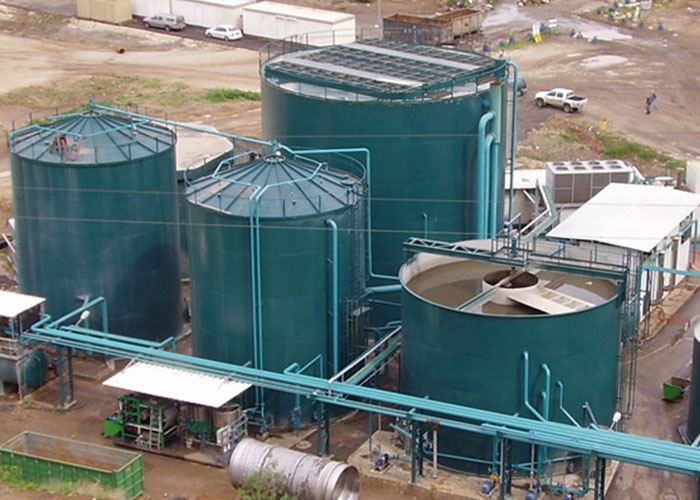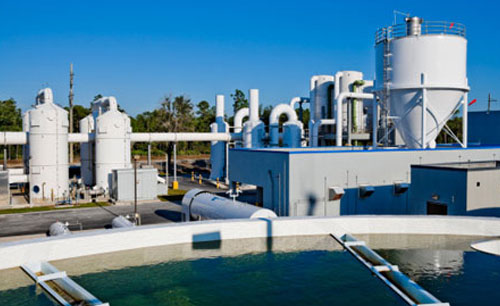There are many industries where Effluent Treatment Plants are needed. For example, refineries, coal-fired power plants, and manufacturing all generate wastewater that needs to be treated. In addition to chemicals, industrial sewage may contain food waste, microplastics, radionuclides, and other contaminants that are not good for drinking water supplies. Therefore, it is important to install a sewage treatment plant that is specifically designed to treat this wastewater.
Depending on the location of your home, you might have to purchase an STP to handle your sewage. Generally, residential buildings need at least one STP to treat sewage. Many STPs are located underground, making them difficult to maintain. Moreover, you may not be able to inspect them without hiring an expert. It is better to consult a professional if you have any doubts about the process.
Anaerobic digestion
Anaerobic digestion is a waste treatment process that breaks down large molecules biologically. Before digestion, the biomass is subjected to thermal hydrolysis. Steam is introduced to the process in a pulper. The sludge is then mixed with the steam and homogenized. The mixture is then fed into the reactor and held at 165 deg C for 30 minutes.
Sewage sludge is a complex mixture that contains significant amounts of solid matter, organic pollutants, pathogens, and nutrients. The carbon to nitrogen ratio must be balanced to allow for proper digestion in anaerobic digesters. Malaysian sludge, for example, has a C/N ratio of six, while the optimal ratio is around six to 16.

Anaerobic digestion requires two stages: the first stage is anaerobic, in which the sludge thickens to five percent dry solids and is heated. The second stage uses acids-forming bacteria to hydrolyze large molecules into smaller, water-soluble molecules. During this process, other bacteria convert the dissolved matter into biogas, which is then discharged into a separate tank.
Activated sludge

Activated sludge is an essential component of effluent treatment plants. During the treatment process, the sludge is broken down into different components that aid in the breakdown of the waste. In some cases, it can be used to treat sewage. In some cases, sludge is produced that contains microbial toxins. In such cases, it is advisable to use a treatment system with a high BOD5 content to prevent the growth of dangerous bacteria.
Activated sludge is commonly used for secondary wastewater treatment. It utilizes a dense microbial culture in suspension to biodegrade organic material in aerobic conditions. The solid part is then separated using a biological floc. The system also requires diffused or mechanical aeration to maintain an aerobic environment. Typical retention times are five to fourteen hours for conventional units and 24 to 72 hours for low-rate systems.
Activated ponds
In the top industries where effluent treatment facilities are a must, activated ponds can be an effective solution. While a facultative pond's maintenance needs are relatively low, they should be monitored regularly for scum mats, which are most common in the downwind corners. They should also be kept free of grass on the embankments, though.
An oxidation pond is a shallow, large pond designed for biological oxidation. It uses sunlight, inorganic compounds, and microorganisms to break down wastewater. This process is highly energy-intensive, but the resulting sludge is biodegradable. Activated ponds are particularly effective in industries with high ammonia concentrations, as they need to use a large surface area to dewater.
A facultative pond's pH varies from day to day, depending on the concentration of organic materials in the wastewater. During the day, algae utilize CO2 and other organic materials while bacteria respire it during the night. The resulting sludge is usually removed after two years of operation at the design flow. While there are numerous benefits to using a facultative pond, a thick scum layer can pose problems for some industries.
Coal-fired power plants
A proposal to reduce ORSANCO authority could slow decades of progress to clean up the Mississippi River. Clean water regulations have helped riverside cities rediscover their waterfronts, but significant pollution concerns remain. The EPA proposal could relax clean water regulations for electric utilities, which some climate change advocates worry could weaken the environmental protections of coal power plants. However, the EPA has already regulated wastewater from these industries since 1982. As of now, state regulation on metals and selenium is the only way to ensure that coal power plants are not polluting the water.
Water pollution from coal-fired power plants is a huge issue due to the significant amount of harmful pollutants released into our environment. This pollution is generated through mining, processing, burning, and waste storage. The pollution from coal-fired power plants contributes to global warming by releasing 3.7 million pounds of CO2 annually. That's equivalent to cutting down 161 million trees. As for sulfur dioxide, which forms tiny airborne particles, it can lead to acid rain and smog.







































Share Post